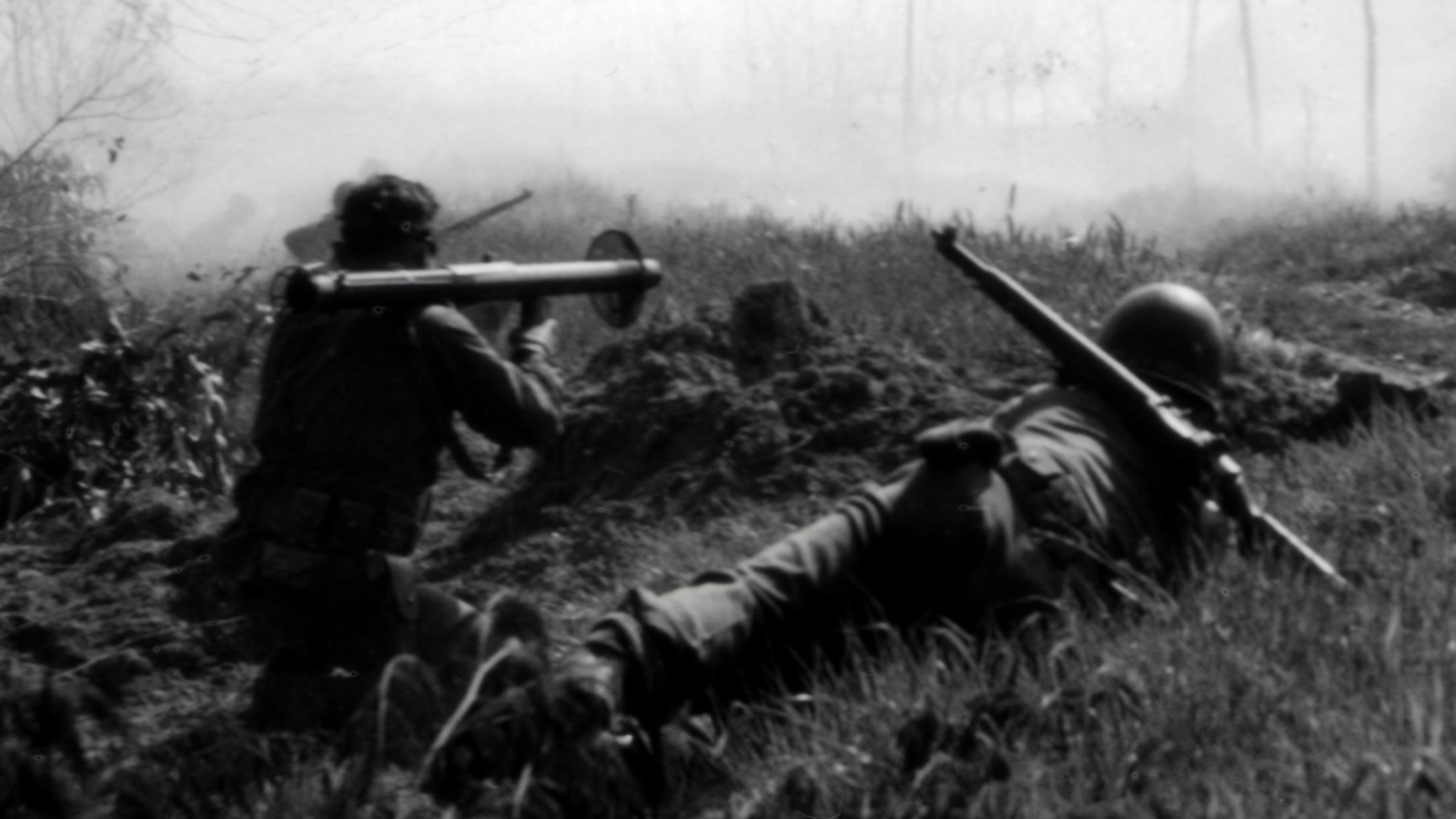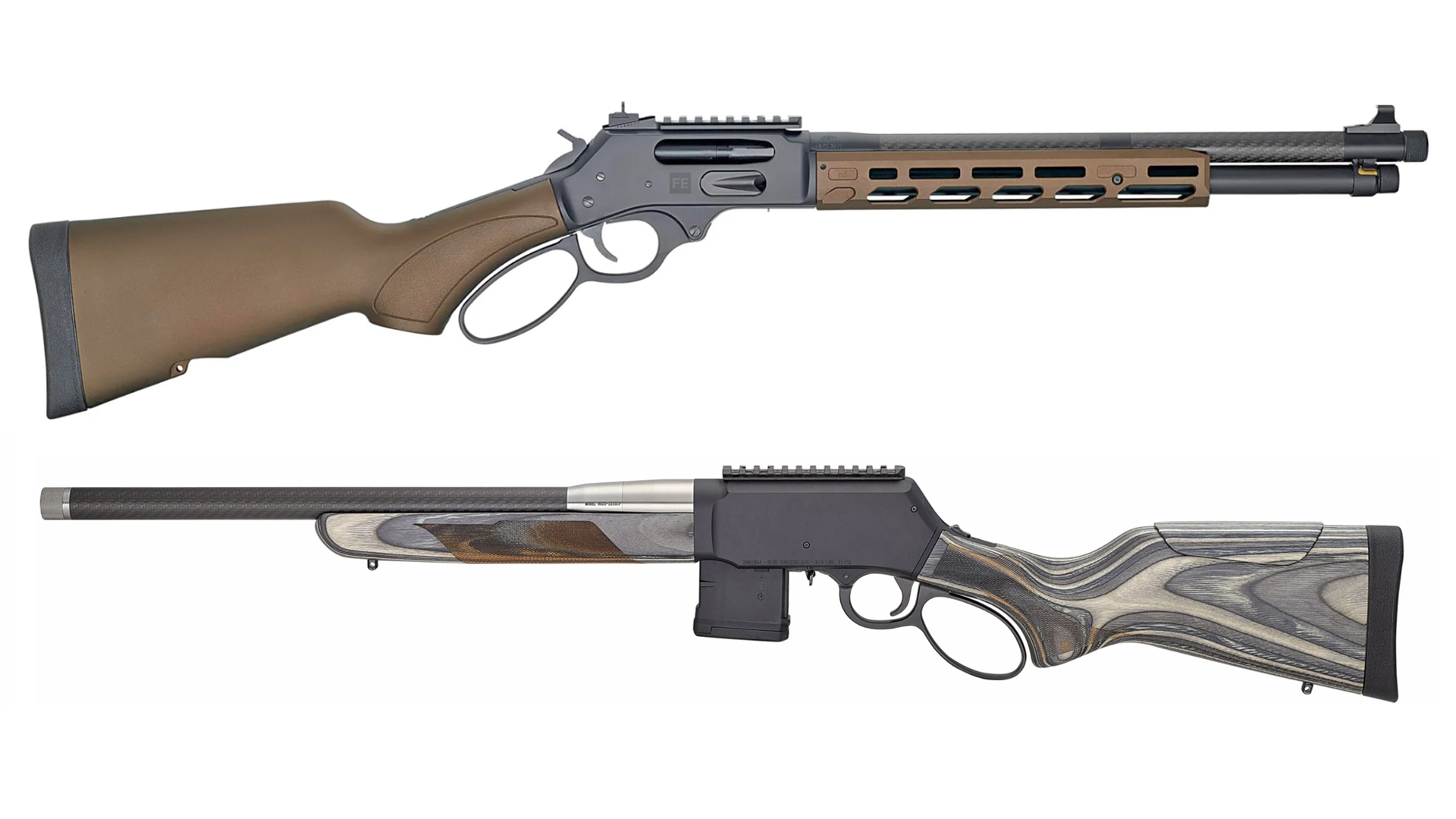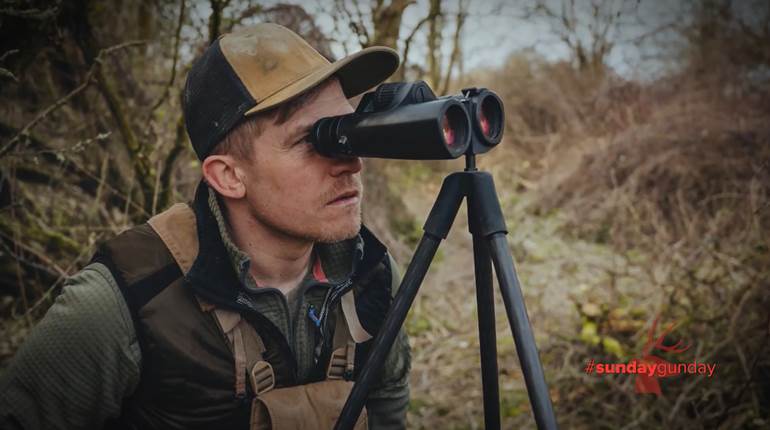
Throughout 1941 and 1942, the British military sought to harass and disrupt German operations in occupied Western Europe by any means possible. British commandos raided bases on Hitler’s Atlantic Wall, primarily on the French coast, but also in Norway. In March 1942, “Project Plough” was proposed to Lord Louis Mountbatten, the British chief of combined operations. Project Plough’s target was Norway, and the mission was to land a significant commando force, specially trained and equipped for winter and mountain warfare, to create a base within Norwegian territory that would harass the Germans in Norway while preparing a route to invade Germany from the north.

“Plough” was a highly ambitious plan, to say the least, and it demanded far more resources than the British commando organization could provide. Instead, the concept was offered to the Americans and was accepted by Gen. George Marshall, chief of staff of the U.S. Army. By May 1942, the plans for “Plough” had been reviewed by Maj. Robert T. Frederick, an operations officer on the U.S. general staff. Frederick assessed the Project Plough as being unfeasible, with unachievable goals and genuine potential for complete disaster. Even so, Gen. Marshall and Gen. Dwight Eisenhower did not want to back down from the challenge—and the potential to open a coveted second front against Germany.
A Joint Canadian American Force
After a brief period with Lt. Col. Johnson at the helm of the project, Lord Mountbatten suggested that, despite his poor assessment of the plan, Maj. Frederick take over. Eisenhower approved, promoted Frederick to colonel, and instructed him to create a fighting force to make it work. On July 9, 1942, the First Special Service Force (FSSF) was activated as a top secret, joint Canadian-U.S. force that answered directly to the joint chiefs of staff.
 A joint Canadian American strike force: Cleaning an M1 rifle in the FSSF’s Helena barracks. Author’s photo collection.
A joint Canadian American strike force: Cleaning an M1 rifle in the FSSF’s Helena barracks. Author’s photo collection.
The American contingent was drawn from officer cadets at Fort Benning and Fort Belvoir, along with men recruited from northern and western areas with experience as hunters, guides, lumberjacks and other hardy outdoorsmen. Canadian volunteers were mostly diverted from a proposed Canadian parachute battalion. The Canadians remained in their own army (and were paid by the Canadian government), but their uniforms, equipment and supplies were provided by the U.S. Army. Training began almost immediately at Fort William Henry Harrison near Helena, Mont.
 The Canadians provided combat experience including first-hand knowledge of German small arms. Here a Canadian member of the FSSF demonstrates the German MG34. Author’s photo collection.
The Canadians provided combat experience including first-hand knowledge of German small arms. Here a Canadian member of the FSSF demonstrates the German MG34. Author’s photo collection.
In the following months, the FSSF members were in for intense training in the rugged mountains of Montana. A high percentage of injuries were incurred in their early parachute training operations, and the coupling of Canadian and American troops created unique challenges for the force leaders. Ski and snowshoe training was provided by Norwegian instructors. Eventually, the unit began to gel, and as the men became a cohesive fighting force, they referred to each other as “Forcemen.”

After returning from Kiska: A FSSF display including a captured Japanese Arisaka rifle, along with a German MG34 LMG and Mauser Karabiner 98k rifle, along with a Canadian Lee-Enfield No. 4 Mk I (not used by the Forcemen). Author’s photo collection.
On Aug. 15, 1943, the FSSF was part of the invading force that landed on Kiska in the Aleutian Island chain. But there was no baptism of fire for the Devil’s Brigade on Kiska—the Japanese had abandoned their positions there. By mid-September, the Forcemen had returned to the U.S. assembling at Fort Ethan Allen in Vermont. They were soon to discover that “Project Plough,” and any notion of attacking Germany or occupied Europe through Norway, had been scrapped. The men were trained and ready, and now they were literally looking for a fight. They found it on the Italian front. On Nov. 19, 1943, the FSSF went into the line in the mountains near Naples.
 The Thompson SMG provided the short-range firepower for the 1SSF, shown in a Forcemen’s display along with a German MP40, an early Sten Mk II, and a Mauser Karabiner 98k rifle. Author’s photo collection.
The Thompson SMG provided the short-range firepower for the 1SSF, shown in a Forcemen’s display along with a German MP40, an early Sten Mk II, and a Mauser Karabiner 98k rifle. Author’s photo collection.
Making A Name For Themselves
Beginning with their daring, mountain-climbing attack on German defenses atop Monte la Difensa, and through several other mountain actions, the FSSF earned a reputation for bravery and ferocity. In February 1944, after the Forcemen began their aggressive raids against German positions surrounding the Anzio beachhead, the unit gained the nickname “The Black Devils.” Whether this originated from their German opponents or was something dreamed up by Col. Frederick and his staff to add to their reputation remains a mystery. Either way, the FSSF ultimately earned the moniker and paid for it in blood—with an overall attrition rate of more than 600 percent. In their relatively short combat career, the 1,800 men of the FSSF created more than 12,000 German casualties, while taking almost 7,000 prisoners. The Germans consistently over-estimated the size of the force, assuming that it was a division-size formation. A captured German communication describing the FSSF was pointed: “They are treacherous, unmerciful and clever. You cannot afford to relax.” Meanwhile, the Forcemen were noted for leaving a combat “calling card,” a sticker written in German that loosely translated to “The worst is yet to come.” The FSSF was as prophetic as they were deadly.

Mountain fighting: The FSSF carried its “Johnny Guns” wherever it went, including their harrowing mountain warfare experiences in Italy. This Forceman with his M1941 Johnson LMG is seen near Radicosa, Italy in January 1944. NARA photograph.
Arming The Forcemen
The FSSF was always envisioned as a strike force, a cross between commandos, paratroopers and light infantry. Consequently, their arms needed to be light enough to be easily carried into any combat environment while delivering the greatest amount of hard-hitting firepower.
 The FSSF used the .30-cal. Browning M1919A4 as its medium machine gun. Author’s photo collection.
The FSSF used the .30-cal. Browning M1919A4 as its medium machine gun. Author’s photo collection.
The FSSF was equipped with U.S. gear, and despite the Canadian presence in the force, American rifles, submachine gun, and light machine guns were chosen as armament. Colonel Frederick had a direct pipeline to U.S. Army supply, and this gave FSSF priority in their requests. They received the semi-automatic M1 Garand rifle at a time when many American units still carried the bolt-action M1903 Springfield, and their British counterparts carried the bolt-action SMLE. The Forcemen also received the .45-cal. Thompson SMG in quantity—at a time when British commandos were transitioning to the lighter 9 mm Sten gun. The Browning Automatic Rifle rounded out the initial mix of firearms for the force. The Garand, the Thompson and the BAR were all excellent firearms, offering an excellent combination of firepower, range, and accuracy. Unfortunately, they were all rather heavy for a commando force that was expecting to be committed to battle by air.
The heaviest gun in FSSF firearms arsenal was the Browning .30-cal. M1919A4 machine gun—the gun weighing in at about 31 lbs., with its M2 tripod weighing 14 lbs. The M1919A4 was a capable machine gun (with a steady cyclic rate of 600 rpm), but its overall weight minimized its use in FSSF operations, particularly in mountain fighting in Italy.
 A moment to remember the fallen: FSSF men pause to honor a friend before they move on to the next battle. Anzio area, 1944. NARA photograph.
A moment to remember the fallen: FSSF men pause to honor a friend before they move on to the next battle. Anzio area, 1944. NARA photograph.
To help sustain the Force behind enemy lines, FSSF members were trained on the use and maintenance of German firearms, most notably the Mauser 98k rifle (8 mm Mauser), the MP 40 submachine gun (9 mm Luger), and the MG34 GPMG (8 mm Mauser).
The “Johnny Gun”
The FSSF was open to a wide range of infantry arms to suit their needs, and this led them to test the Johnson M1941 LMG during early 1943. Impressed with its unique design, the FSSF requested 125 of the guns. American Rifleman Field Editor Bruce Canfield notes that these were procured by the U.S. Army from the Netherlands Purchasing Commission and not via a trade with the United States Marine Corps (the only other U.S. military user of the M1941 LMG).
 The FSSF used the .30-cal. Johnson M1941 LMG (called the “Johnny Gun” by Forcemen) during their time in Italy. Note the bipod and 20-round magazine held by the man at the right. Anzio area, early 1944. Author’s photo collection.
The FSSF used the .30-cal. Johnson M1941 LMG (called the “Johnny Gun” by Forcemen) during their time in Italy. Note the bipod and 20-round magazine held by the man at the right. Anzio area, early 1944. Author’s photo collection.
The FSSF encountered some early problems with their “Johnny Guns” (issues with extractors, bolt handles and magazine springs)—and these concerns were chalked up to limited training and inexperience with the type. As time went on, the FSSF’s maintenance record with the Johnson LMG improved consistently, and the M1941 would perform well in combat in Italy. Johnson LMGs offered an easily replaceable barrel, and a good supply of spare barrels helped keep the rare Johnny Guns in service through the Anzio breakout.
 Melvin Johnson demonstrating the Johnson LMG during the summer of 1940. The firearm could be loaded by stripper clips at the ejection port, or single rounds could be loaded into the breech. Author’s photo collection.
Melvin Johnson demonstrating the Johnson LMG during the summer of 1940. The firearm could be loaded by stripper clips at the ejection port, or single rounds could be loaded into the breech. Author’s photo collection.
Overall reactions from the FSSF to the Johnson LMG showed the men preferred its light and flexible firepower in offensive operations—particularly valuable for aggressive light infantry operating in the rugged Italian terrain. The Johnson LMG’s firepower-to-weight ratio was impressive: it weighed little more than 12 lbs., not much more than a loaded M1 rifle, and about the same as a Thompson submachine gun (the M1A1 Thompson weighed 10 lbs., unloaded). Firing at up to 600 rpm, the Johnny Gun’s firepower often turned the tide in favor of the Devil’s Brigade at critical moments in combat.
 A rare image of the Johnson LMG in action with the FSSF. Anzio area, 1944. NARA photograph.
A rare image of the Johnson LMG in action with the FSSF. Anzio area, 1944. NARA photograph.
In his book “The First Special Service Force: A War History of the North Americans” (Infantry Journal Press, 1947), Lt. Col.l Robert Burhans commented on the Johnson LMG’s importance to the Forcemen: “The Johnson was, pound for pound, the most valuable weapon the FSSF possessed.”
 Back from raid: Men of the FSSF examine a captured MG15 light machine gun. Note the 75-round “saddle drum” magazine in the foreground. Anzio area, 1944. NARA photograph.
Back from raid: Men of the FSSF examine a captured MG15 light machine gun. Note the 75-round “saddle drum” magazine in the foreground. Anzio area, 1944. NARA photograph.
Hand-to-Hand
Reflecting the true commando spirit, the Forcemen were skilled in hand-to-hand combat. To this end, the FSSF developed its own fighting knife: The Fighting Commando Knife, Type V-42. Colonel Frederick and several other Force officers contributed to the design of the V-42, which was based on the British Fairbairn-Sykes fighting knife. The V-42 stiletto is a frightening bit of gear, particularly in the hands of trained commando—its double-edged, carbon-steel blade could penetrate a German helmet with a single thrust. A pointed steel “skull crusher” was added to the pommel to create one of the most intimidating fighting knives of all time.
 FSSF men in training near Helena, Mont. Note the use of the wooden dummy M1 rifle. NARA photograph.
FSSF men in training near Helena, Mont. Note the use of the wooden dummy M1 rifle. NARA photograph.
A Quiet Ending
After participating in the invasion of Southern France during August 1944, the FSSF took up defensive positions on the border of France and Italy. The end of the war came quietly for the First Special Service Force. On Dec. 5, 1944, the FSSF was disbanded in Villeneuve-Loubet. What began as an unfeasible plan to open a second front in frozen Norway, ultimately created one of the finest special forces in the proud history of two armies—American and Canadian.
















![Auto[47]](/media/121jogez/auto-47.jpg?anchor=center&mode=crop&width=770&height=430&rnd=134090788010670000&quality=60)



















